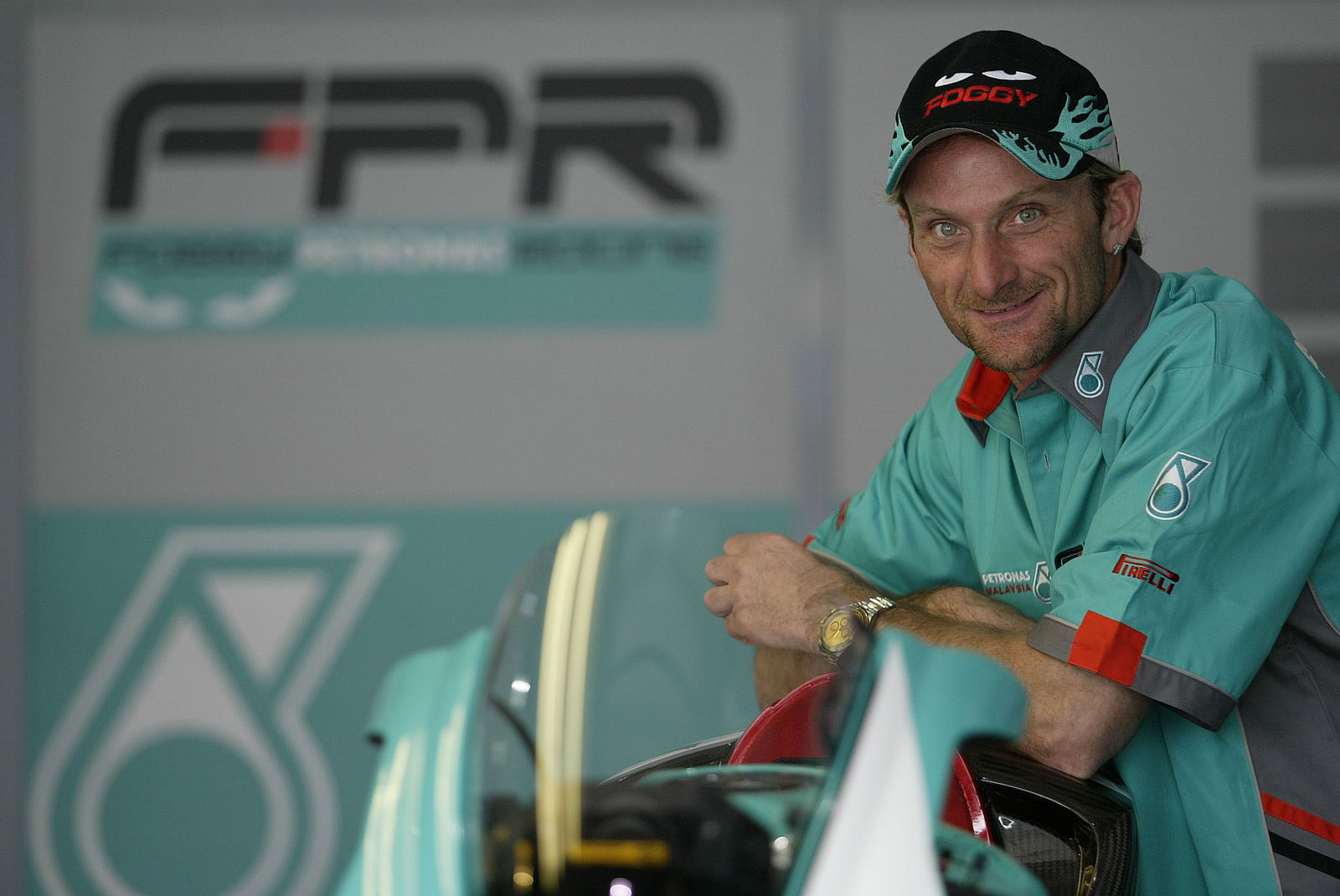Surtees: MotoGP should be 600cc.
Former four-times 500cc World Champion, John Surtees, believes that MotoGP engines should be limited to 600cc - rather than the soon to be 800cc - since it would provide a natural progression from the light and nimble 125 and 250cc machines, match the commercial needs of the manufacturers and allow for long term rule stability.

Former four-times 500cc World Champion, John Surtees, believes that MotoGP engines should be limited to 600cc - rather than the soon to be 800cc - since it would provide a natural progression from the light and nimble 125 and 250cc machines, match the commercial needs of the manufacturers and allow for long term rule stability.
Surtees, the only man ever to win both 500cc and Formula One world championships, has now taken on the role of team principal for Team Great Britain in the new A1 Grand Prix series, dubbed the 'world cup of motorsport' because of the way it pits nation against nation.
However, despite his four-wheeled motorsport commitments, the 71-year-old Englishman - who won a total of seven motorcycle world championships before clinching his four-wheeled title with Ferrari in 1964 - continues to keep a close eye on MotoGP, and has clear opinions about the direction of the sport.
"I think that there were mistakes made during the change from two-strokes to four-strokes (in 2002)," Surtees told Crash.net at the recent Dubai A1 GP round. "Those mistakes, I suppose, had some justification in that they weren't sure how many people were going to be able to actually come up with a four-stroke design in time. So they had to have a year when two-strokes were still racing (against the four-strokes)."
By combining two and four-strokes, Surtees implied that the engine capacity of the four-strokes had to be set at level high enough (990cc) to ensure that the new machines could instantly beat the 500cc two-strokes - even though, at that time, the MotoGP four-strokes were at the very beginning of their development while the two-strokes had reached their peak.
It worked in the sense that four-strokes won every race that year - and two-strokes were quickly replaced as a result - but, as four-stroke progress has continued, the new machines have got relentlessly faster, forcing engine capacity to be reduced to 800cc from 2007 onwards.
However, Surtees isn't convinced by that value and believes 600cc - the capacity used by Supersport road machines - would have been more appropriate:
"I would have thought that the long term programme would have been much better if they had gone immediately to 600. 600 is a wonderful capacity relative to worldwide sales and appeal - and you only need to go back to my time when we had 125, 250, 350 and 500," he said.
"I think that if you had 125, 250 and 600 you have a wonderful range of machines which fit in with 1; the commercial market and 2; the progression of riders through (the lower world championships).
"I remember speaking to Rossi and he said 'MotoGP is a bit like a cart horse compared with a race horse' - relative to the two-stroke - because the two-stroke had that lightness and ability to be ridden on the edge, whereas the bigger machines tend to be more cumbersome and physical.
"Obviously (the 990cc four-strokes) have improved considerably since they were introduced - you only to look at how they ride them, they are very rideable now - but I still think that for manufacturers and everyone else you don't want continuous changes, you need stability.
"We had stability once, when we had the formulas as I said earlier, and I think if they could have gone and bit the bullet, as such, this time - never mind tinkering about with 800cc and things like this - I mean, 800cc, is it a manufacturers' line? 800cc doesn't fit in with anything. I would have thought 600, 250 and 125 would have been ideal."
However, the main problem with dropping capacity to 600cc would be that the MotoGP prototypes would be in real danger of being outpaced by 1000cc Superbikes, unless minimum weight limits were relaxed.
MotoGP usually brushes off any current World Superbike lap time comparisons - inevitable at present due to the almost identical 990cc engine size selected by MotoGP from 2002 - by stating that the GP prototypes are 'much harder to ride'...
It's an unusual claim, since it implies that - after starting from a clean sheet of paper - MotoGP manufacturers end up producing a racing machine that's more difficult to ride, and often only 1-3secs faster around a racetrack, than the creations of their 'road bike' departments with control tyres... That may simply be because motorcycles are close to reaching their ultimate design solutions, but try explaining it to a non-racer.
Nevertheless, in defence of the 990cc value, there is no doubt that being able to call MotoGP prototypes 'the fastest racing motorcycles in the world' was vital to consolidate the newly formed four-stroke class in 2002, but its success since then arguably means that MotoGP (like Formula One) could potentially afford to sacrifice its 'fastest' title - perhaps by dropping as low as 600cc - without losing its dominant position.
Indeed, the future strength of the premier-class will surely depend almost totally on keeping manufacturer support - since it is the manufacturers that are attracting and keeping the world's best riders in MotoGP and funding the design of unusual hi-tech machines for them to race.
It is those attributes, rather than top speeds or lap times, which ultimately puts MotoGP on top and - as Surtees pointed out - MotoGP continues to boast the leading manufacturers. Even following the withdraw of Aprilia, there are still two more manufacturers - Ducati and Kawasaki - than were present at the end of the 500cc era.
"You've got the two top manufacturers in motorcycles - who have shown it over the years - Honda and Yamaha, fighting it out," he said. "Suzuki occasionally get there act together, and are quite capable, but tend to have a little more tunnel vision than the other two - again that's been shown over the years.
"It would be superb to see Ducati really up there, on a consistent basis," he continued. "They flattered to deceive the year before, and then this year - until the end of the season - were extremely disappointing. But we need to have it international and so I hope the Ducati programme works."
The five existing manufacturers have all agreed to design new machines for 2007, but would they stick around - and would Honda, Yamaha and Ducati still supply multiple teams - if a further engine capacity cut is introduced? No manufacturer can sidestep cost - and new machines cost a lot of money to design and develop - and, unlike a Superbike, they can't be sold.
990cc lasted for five seasons before speeds were deemed dangerous, so does that mean that 600cc will be replacing 800cc from 2012? It could certainly happen - the 800cc limit is only guaranteed for five-years - and with the planning required for any new model running into years, that date isn't as far away as it seems...
Meanwhile, one aspect of contemporary MotoGP funding that - perhaps surprisingly - wasn't of significant concern to Surtees is the lack of big name sponsors whom, despite the worldwide success of the series, simply haven't materialised.
"If one can run (the teams) on the basis of the central funding - television money and such like - and one doesn't have to go along and sell every inch of the bike then its perhaps better," he said.


